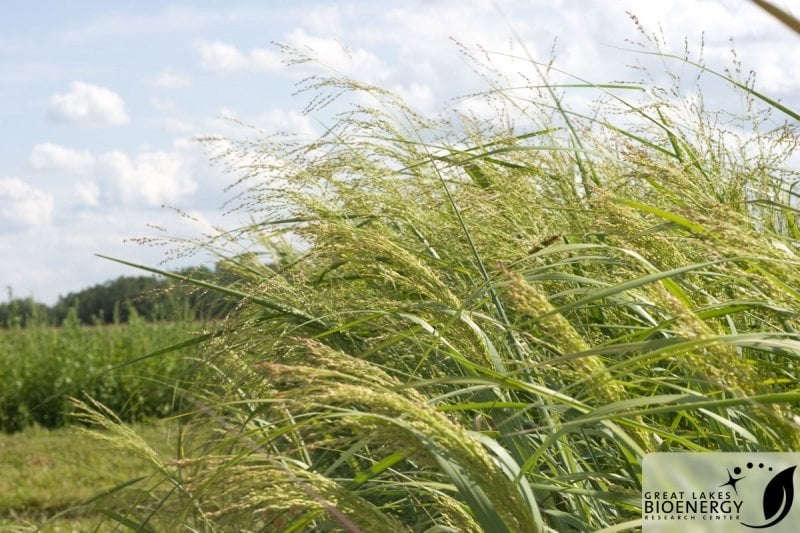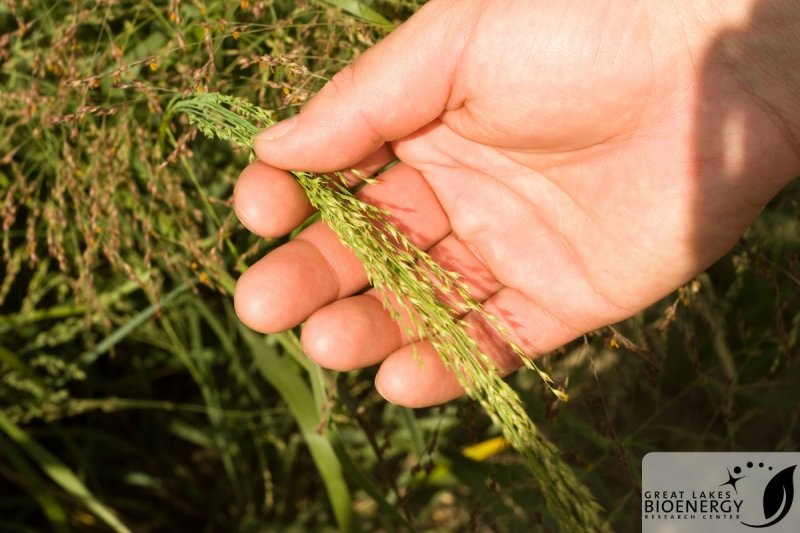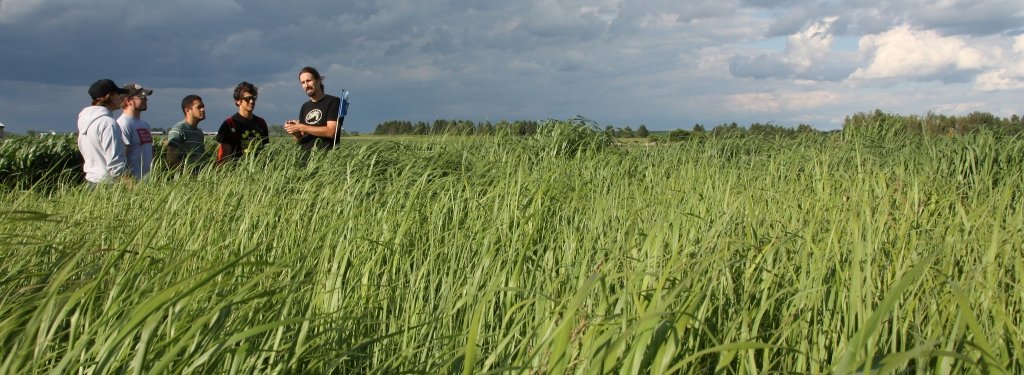Switchgrass is a promising biofuel alternative to corn, but farmers, environmentalists and biofuel developers, find deciding on the right time to harvest particularly thorny.
Generating biofuels from agricultural sources is nothing new; the United States has been using corn to generate ethanol for decades. Until now, corn has been a passable biofuel source, but it is an annual crop requiring yearly planting, costly fertilization and irrigation, as well as a narrow harvest window dependent on grain maturity. The benefits of using dedicated energy crops, crops grown with the sole purpose of being used to create fuels, give plants like switchgrass a hefty leg up over corn.
Switchgrass, unlike corn, is a low-resource perennial plant. This not only saves on replanting costs—switchgrass stands are expected to last for 20 years—but also allows its root system to stay in the ground, reducing risk of erosion and run-off while channeling fertilizing nitrogen back into the soil. Switchgrass serves as a wildlife habitat for birds and predatory insects and is exceptional at sequestering carbon into the soil, meaning it can pull carbon dioxide from the air to help combat greenhouse gas emissions. And since switchgrass harvest isn’t dependent on grain maturity, farmers have more options when it comes to timing.
Energy Crop Harvesting: When is Best?
The current viable harvest window for switchgrass extends from peak biomass, when the grass is at its biggest before it begins to degrade from weathering, to the first killing frost, when the plant shuts down completely for the winter. The longer the plant stays in the field, the more nitrogen returns to the soil—a clear environmental benefit—but this extra time reduces the amount of biomass harvested from the crop. Future biofuel manufacturers may want to harvest multiple times per season to efficiently use storage facilities, while farmers must consider weather and the harvest times of their other crops. A conundrum.
Nailing down a definitive answer to the switchgrass harvest debate is something Rebecca Ong, assistant professor of chemical engineering, is exploring in her research. Working with researchers from the University of Tennessee, the University of Wisconsin-Madison and Michigan State University, Ong monitored and sampled several stands of Wisconsin switchgrass to better understand the costs and benefits to harvesting at various points in the season. The work is part of the Great Lakes Bioenergy Research Center.
"A lot of times there seems to be this disconnect between our processing requirements and our environmental requirements."
Microbes Shake Up the Data
Once harvested, switchgrass doesn’t magically become biofuel; the crop has to be broken down and fermented to convert its natural sugars into ethanol. Harvest times affect conversion efficiency and research until Ong's has demonstrated that, generally, earlier is better.
Comparing data from samples collected every two to three weeks from the switchgrass fields against biofuel yield data from each site, Ong discovered something rather unusual: As the crop aged past senescence, the point at which plants begin to go dormant for the winter, ethanol yields from the harvested crop became more efficient rather than less so.

Ethanol is produced from energy crops like switchgrass in a two-step process: First, using chemical and biological processes to break down the plants’ cell walls, accessing and splitting the complex polymeric sugar chains into individual sugars; then applying biological processes (usually microbe-aided fermentation) to convert the sugars into ethanol.
The types of sugars present in each energy crop vary, and the microbes often need some persuading to utilize certain sugars like xylose, one of those found in switchgrass. Previous researchers at Purdue University have engineered yeast, the microbe involved in switchgrass fermentation, to break down xylose, but the process can be fickle and sensitive to inhibition.
“Something we’re trying to do [in our lab],” Ong says, “is break up that polymer, break all the links so that we have those individual sugars and then convince the microbes that they want to actually eat them.”
In the later samples from Ong’s study, the yeast didn’t need convincing. The xylose had become consumable.
Ong believes this change is due to plant senescing, which is when plants begin to go dormant and dismantle compounds in their stems and leaves for storage and reuse the following growing season. When the switchgrass was harvested before senescence, one or more of these compounds might have been interfering with the microbes’ ability to digest the xylose. Giving the plants more time in the field may have made the switchgrass sugar more appealing to the yeast. “Most of the time,” Ong says, “people say ‘harvest early, get the highest conversions,’ but no one has taken it through fermentation to see what the microbes do in the process.”
"It’s the first time that anyone has actually seen a negative impact on the process side from harvesting early."

Sooner or Later, It All Goes to Seed
And while this might be good news for the environment and the biofuel manufacturing process, this much later harvest window puts a strain on farmers who are limited by weather, regardless of fascinating sugar behaviors.
"Previously, people had been saying ‘Well, you can harvest any time. Earlier is better [for processing], but you can really harvest any time.’ And what we’re finding is that this may not be true. So, you may have a more limited harvest window than we were expecting."
The next step, according to Ong, is to figure out what compound or compounds are inhibiting the xylose conversion earlier in the harvest season. Once identified, they can deploy strategies to mitigate the effects, like engineering the biofuel-making microbes to be more tolerant, giving farmers more room to harvest switchgrass during good weather.
Michigan Technological University is an R1 public research university founded in 1885 in Houghton, and is home to nearly 7,500 students from more than 60 countries around the world. Consistently ranked among the best universities in the country for return on investment, Michigan's flagship technological university offers more than 185 undergraduate and graduate degree programs in science and technology, engineering, computing, forestry, business, health professions, humanities, mathematics, social sciences, and the arts. The rural campus is situated just miles from Lake Superior in Michigan's Upper Peninsula, offering year-round opportunities for outdoor adventure.






Comments